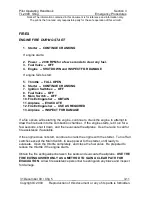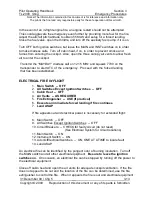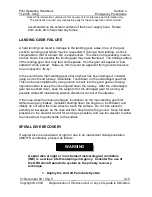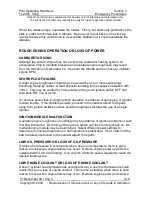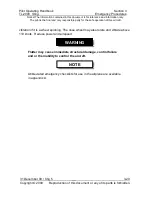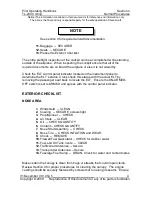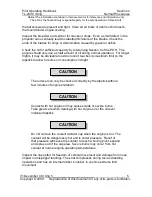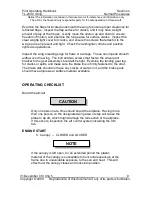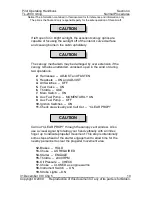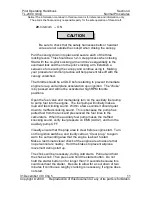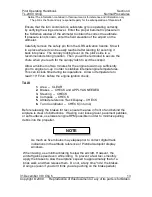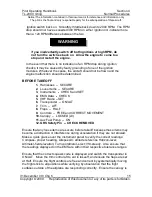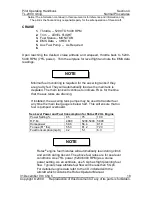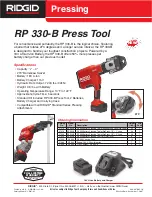
Pilot Operating Handbook
Section 4
TL-2000
Sting
Normal Procedures
Notice! The information contained in this document is for reference and information only.
The pilot is the final and only responsible party for the safe operation of this aircraft.
31 December 09 / Chg 5_____________________________________________5
Copyright © 2009 Reproduction of this document or any of its parts is forbidden.
that all screws are present and tight. Clear all air inlets of debris or bird nests
that could hinder engine cooling.
Inspect the propeller and spinner for cracks or chips. Even a small defect in the
propeller can eventually lead to catastrophic failure of the blades. Check the
ends of the blades for chips or delamination caused by gravel or debris.
Check the oil for sufficient capacity by referencing Section 9 of the POH. The
engine should only use a small amount of oil during normal operation. For longer
flights, it may be advisable to add oil until it reaches its maximum limit on the
dipstick to allow for some oil consumption in-flight.
The oil level can only be checked correctly by the dipstick within a
few minutes of engine shutdown.
Contact with hot engine oil may cause scalds or severe burns.
Take great care when dealing with hot engine oil or the oil level
indicator dipstick.
Do not remove the coolant radiator cap when the engine is hot. The
coolant will be dangerously hot and is under pressure. Relief of
that pressure will cause the coolant to reach a boiling point, expand
and spray out of the cap area. Severe burns may occur from hot
coolant at normal engine operating temperatures.
Inspect the nose strut for freedom of vertical movement and damage from nose
impact on misjudged landings. The strut compresses during taxi and landing
operations and has an internal rubber ‘snubber’ to cushion extreme limit
movement.
CAUTION
CAUTION
CAUTION

